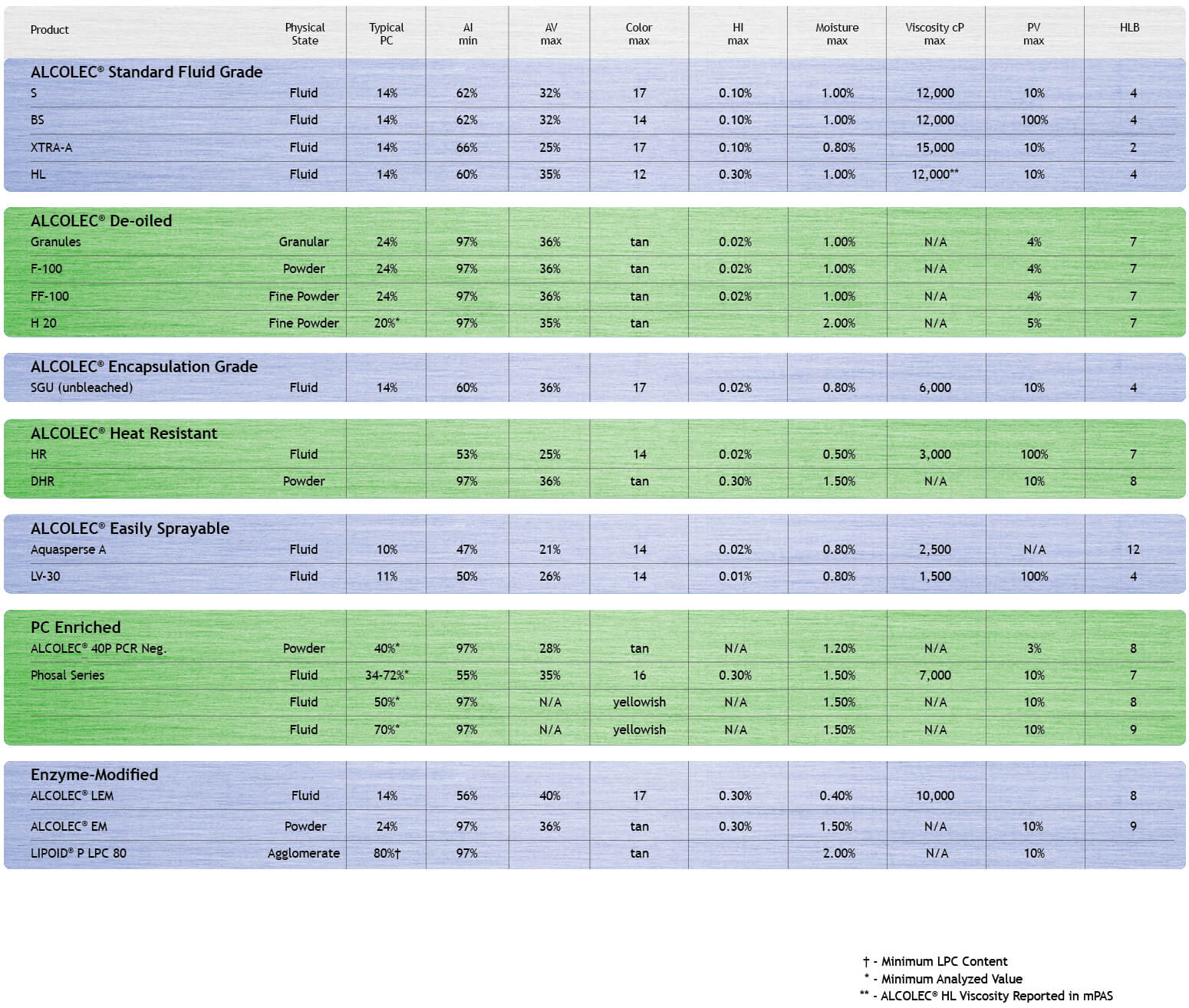Classification
Lecithin products are classified using attributes such as color, viscosity, and the percentages of certain components. The terms used when specifying lecithins are:
Acetone Insolubles (AI)
Expressed as a percentage. This is a measure of the surface-active portion of a lecithin, comprised mainly of phospholipids and glycolipids.
Acid Value (AV)
Expressed as meq KOH/kg. This is a measure of total acidity afforded by ionizable groups of phospholipids and free fatty acids added to some liquid lecithins to stabilize viscosity.
Color
Measured against the Gardner scale. Most fluid lecithin products range from having a light honey (11 on the scale) to dark amber (17 on the scale) color.
Hexane Insolubles (HI)
Expressed as a percentage (usually under 0.1%). Measures residual non-fatty material composed mainly of soybean meal fines.
Moisture (H2O)
Measured by the Karl Fisher method, a potentiometric titration specific for water. Powder and liquid lecithins typically contain approximately 1% water.
Viscosity
For fluid lecithins, reported in centipoise (cP) at 25ºC/77ºF, after evaluation with a Brookfield rotary viscometer.
Peroxide Value (PV)
PV is a measure of unwanted lecithin oxidation, which can occur between manufacture and delivery. ALC specifies the lowest possible PVs and handles its products with extreme care to help minimize oxidation.
Phosphatidylcholine (PC)
Amphiphilic phospholipid molecule and the main emulsifier in lecithin. PC is the major component of biological membranes and supplements the diet with natural choline.

This domain (www.AmericanLecithin.US) is the only LEGAL domain for American Lecithin Company

115 Hurley Road, Unit 2B
Oxford, CT 06478
Phone: 203.262.7100
Fax: 203.262.7101
Toll-Free: 1.800.364.4416
e-mail: Info@AmericanLecithin.us
This domain (www.AmericanLecithin.US) is the only LEGAL domain for American Lecithin Company
